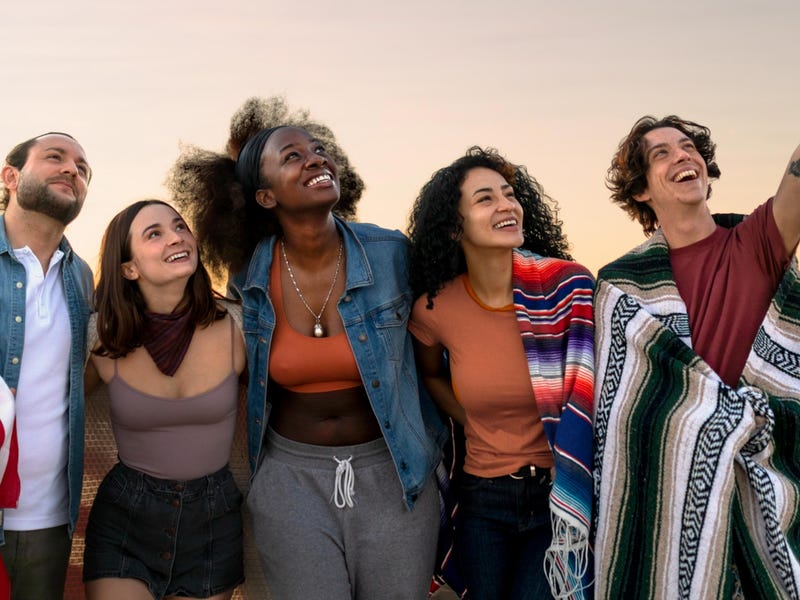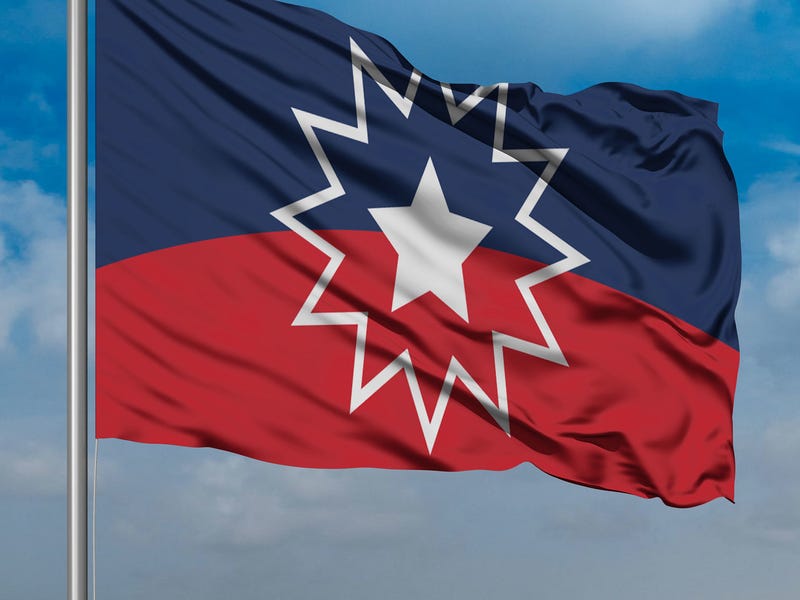
A complete guide to the true history & traditions of Thanksgiving
Author: Elinor Zucchet
Do you smell the roasted turkey? It’s getting chilly outside, maybe with the first snowflakes of the season? Yes, it’s Thanksgiving! You know, that magical day when homes are filled with the warmth of family and friends… and a delicious feast on the table!
It's my favorite American tradition, a moment to hit pause on our busy lives and just be grateful for everything we have. And remember, it’s Thanksgiving, not truth day!
In the US, Thanksgiving goes way back to 1621, when Pilgrims and Native Americans shared a feast. It's a story of unity, but also a reminder of the painful history of colonization.
For our Canadian friends, Thanksgiving comes a little earlier, on the second Monday of October. Their tradition started earlier, too, in 1578!
Keep reading to learn everything about this beloved day, from the history of Thanksgiving to traditions and food, with a few fun facts along the way — they’re like the Cranberry sauce on the table: underrated!
So, put on your Thanksgiving pants, turn on the Parade, and let’s dig in!

The history of the Thanksgiving holiday
If you’re not from America, you’ve probably seen Thanksgiving on TV or in movies. But do you know what it actually celebrates?
Origins of Thanksgiving
Thanksgiving in the US has its roots in the early 1600s, when English Pilgrims celebrated their first successful harvest with a feast shared with the Wampanoag peoples (native tribe).
Up north in Canada, Thanksgiving traditions began a little earlier, with a similar sense of gratitude. Explorer Martin Frobisher held a Thanksgiving ceremony, celebrating his crew's safe arrival after a hazardous journey across the Atlantic.
The first Thanksgiving feast
The first “official” Thanksgiving feast in the United States took place in 1621 in Plymouth, Massachusetts. The Pilgrims and the Wampanoag gathered for a three-day celebration featuring venison, fowl, corn, and other local foods.
However, according to National Geographic and The Washingtonian, settlers in Berkeley Hundred, Virginia, held a Thanksgiving celebration in 1619, likely featuring oysters and ham.
Even earlier, Spanish settlers and the Seloy tribe in Florida shared a meal of salted pork and garbanzo beans in 1565, according to the National Parks Service.
Unlike today's turkey-focused feasts, early Thanksgivings were more about religious observance. Actually, the Pilgrims' 1623 day of prayer is considered by some historians to be the first true Thanksgiving.
In Canada, the earliest recorded Thanksgiving was in 1578, when Frobisher and his crew gave thanks for surviving their journey with a simple meal and prayer in Newfoundland.
Both events — whenever and wherever they took place — were pivotal in shaping the tradition of giving thanks. Little did they know that the tradition — and my heart — would go on and become such a big deal!
What day is Thanksgiving?
Thanksgiving became a national holiday in the United States in 1863, when President Abraham Lincoln designated the last Thursday in November as a day of thanks. President Franklin D. Roosevelt later moved it to the fourth Thursday in November in 1941. Why make it simple?
In Canada, Thanksgiving was declared a national holiday in 1879 and initially celebrated on November 6. The date was eventually moved to the second Monday in October in 1957 to better align with the harvest season, giving Canadians a chance to enjoy autumn's bounty before the harsh winter.
The dark history of Thanksgiving
Unfortunately, Thanksgiving is not all joy and gratitude. In fact, some point to 1637 as the true origin of Thanksgiving, when Massachusetts Bay Colony Governor John Winthrop declared a day of Thanksgiving to celebrate colonial soldiers' victory over the Pequot tribe.
This event, marked by the massacre of hundreds of Pequot men, women, and children in Mystic, Connecticut, reflects a tragic chapter in the holiday's history.
The Thanksgiving peace was brief
Thanksgiving, as celebrated in the United States, often overlooks the darker aspects of its history, particularly for Native Americans. While the holiday commemorates the Pilgrims' successful harvest and cooperation with the Wampanoag people, it also marks the beginning of centuries of displacement, violence, and cultural erasure for Indigenous populations.
Massasoit, the Wampanoag paramount chief, initially allied with the English settlers at Plymouth, assisting them in conflicts against the French and other tribes — and all was well for a while. However, as more settlers arrived and took over Wampanoag lands, tensions grew. According to "Historic Contact," colonial authorities began controlling most aspects of Wampanoag life. Disease had already devastated the Indigenous population, with a 90% reduction by 1620.
Massasoit's son, Metacomet (known by the colonists as King Philip), inherited troubled relations, leading to King Philip's War in 1675. This brutal conflict resulted in significant losses for both sides — up to half of the Native American population and about 30% of the Brits. Metacomet was eventually killed, and his head was infamously displayed on a spike for 25 years. This war was one of many early, violent conflicts between Indigenous peoples and colonists, as it sadly happened in other regions of the world as well.
The impact on native communities
As a result, for many Native Americans, Thanksgiving is a day of mourning rather than celebration. The arrival of European settlers led to the loss of lands, lives, and traditional ways of life for Indigenous peoples. This period initiated a series of devastating events, including wars, forced relocations, and the spread of diseases that decimated Native communities.
Shall we keep celebrating Thanksgiving?
The focus on racial justice in the US has led many teachers, professors, and Native Americans to rethink Thanksgiving, highlighting its history of violence against Indigenous peoples and referring to it as "Takesgiving" or "The Thanksgiving Massacre."
This reflection isn't new. The United American Indians of New England have mourned on Thanksgiving for decades. Frank James, an Aquinnah Wampanoag activist, helped establish a National Day of Mourning in 1970, calling the Wampanoag's welcome of settlers "perhaps our biggest mistake." On this day, Native Americans gather in Plymouth, Massachusetts, to remember those who were killed by European colonists, with prayers, speeches, and marches through the Plymouth Historic District.
Reflecting on the full picture
Understanding Thanksgiving's complete history requires acknowledging both the moments of cooperation and the subsequent centuries of hardship for Native Americans.
By recognizing this dual narrative, we can foster a more inclusive and respectful approach to the holiday, while honoring Native American cultures and contributions.

Thanksgiving traditions
Picture a Hallmark movie. That’s exactly what you’ll find in many homes around Thanksgiving, from seasonal decoration to families gathered around the table!
Thanksgiving in The United States
Thanksgiving in the United States is a time for family and friends gatherings, hearty meals, and cherished traditions.
The Thanksgiving feast is the highlight of the day, typically featuring turkey, stuffing, cranberry sauce, mashed potatoes, pumpkin pie and family recipes.
Drinkwise, eggnog, mulled wines, apple cider, pumpkin spice lattes, cranberry mimosa and hot chocolate are some favorites.
Different regions have their own unique twists. In the South, dishes like cornbread dressing and sweet potato pie are common, while the Northeast might include clam chowder or oyster stuffing. The Midwest often features green bean casserole and rolls made from scratch. Some families incorporate cultural dishes that reflect their heritage, creating a diverse holiday table. Sounds delicious? We’ll come back to that!
In addition to feasting, watching the Macy's Thanksgiving Day Parade is a beloved tradition for many Americans, kicking off the holiday season with its festive floats, performances and flyaway balloons dreaming about freedom.
Football is another staple, with many families watching or playing games together.
Thanksgiving in Canada
Thanksgiving in Canada, celebrated on the second Monday of October, shares similarities with its American counterpart but also has its own traditions, eh!
The Canadian Thanksgiving feast includes turkey, stuffing, mashed potatoes, and seasonal vegetables like squash and Brussels sprouts. Pumpkin pie remains a popular dessert, but regional variations might feature butter tarts or Nanaimo bars – if you’ve never heard of Nanaimo, you should visit Vancouver Island, it’s stunning!
But back to our Canadian turkey.
Family gatherings are central to the holiday, with many Canadians enjoying long weekend activities such as hiking to appreciate the fall colors or visiting local harvest festivals.
Football is also a part of the celebration, with the Canadian Football League (CFL) hosting the Thanksgiving Day Classic.
Certain regions have unique traditions. For example, in Québec, families might serve tourtière, a savory meat pie, while in Newfoundland, Jigg's dinner — a boiled meat and vegetable dish — is common.
Some families, especially those with diverse cultural backgrounds, blend traditional Canadian dishes with foods from their heritage, creating a yummy fusion of flavors and customs.
Thanksgiving food
We could write a whole book about Thanksgiving food — and I think many already exist — but here are the top 10 Thanksgiving dishes. And if you enjoy American food, don’t miss our tantalizing article with more than a 100 classics!

Turkey
The quintessential centerpiece — or queen of the festivities, if I may — roasted or deep-fried, is a must-have on every Thanksgiving table. Just be careful!
Stuffing
If you’re reading this from Europe, this is quite different from our meat stuffing. American stuffing is a savory mixture of breadcrumbs, herbs, and aromatics. And, despite its name, it’s usually cooked separately rather than inside the turkey.
Mashed potatoes
Creamy and buttery mashed potatoes, often topped with gravy, are a beloved comfort food.
Cranberry sauce
Sweet and tart cranberry sauce adds a burst of flavor and color to the meal, and goes oh-so well with the turkey!
Pumpkin pie
A classic dessert made from spiced pumpkin custard baked in a flaky crust, often served with whipped cream.
Green bean casserole
A comforting side dish featuring green beans, cream of mushroom soup — which you can make yourself, so much better! — and crispy fried onions.
Sweet potato casserole
Mashed sweet potatoes topped with a crunchy pecan — oh, yum — or marshmallow topping, offering a balance of sweet and savory flavors.
Gravy
Gravy is essential for moistening and enhancing the flavors of turkey and mashed potatoes.
Pumpkin soup
A warm and comforting starter made from puréed pumpkin, broth, and spices like cinnamon and nutmeg.
Cornbread
Moist and slightly sweet cornbread, served as a side or used in stuffing, adds texture and flavor to the meal. Personally, I wonder how you can eat a whole Thanksgiving feast AND cornbread!
Other staples
Other traditional dishes include Mac & cheese casserole, cream corn, and for dessert, pecan pie, Mississippi mud and meat trifle — just want to check if you were still reading!
Fun facts about Thanksgiving

Turkey is so tiring
Who hasn’t fallen asleep after a good meal? But at Thanksgiving, there’s actually a scientific reason for this, besides eating too much! Indeed, consuming turkey may lead to fatigue as it contains tryptophan, a naturally-occurring amino acid utilized by the human body to produce serotonin. Serotonin, in turn, encourages deep, slow-wave sleep.
A good excuse for a post-turkey nap!
Good luck!
The tradition of breaking the wishbone traces its origins back to ancient Rome, where people would pull apart chicken bones in search of good fortune. Adopted by the English in the 16th century, the tradition continued to evolve. Upon arriving in the New World, Pilgrims engaged in a similar practice, substituting wild turkey bones for chicken. The term "wishbone" itself appeared in the 1800s.
Polyglot Thanksgiving
In Québec, Thanksgiving is called "Action de grâce", literally “the act of grace”. And Spaniards do the same with “acción de gracias”!
Pardon my turkey
The tradition of the American President pardoning a turkey dates back to the 1940s, although the practice wasn't formalized until the 1980s by President Ronald Reagan. Each year, the President spares a turkey from being slaughtered for Thanksgiving dinner, often accompanied by a playful ceremony at the White House. These lucky turkeys — envied by millions — are then sent to live out their days on a farm or sanctuary.
Black Friday
Thanksgiving is a moment for appreciation and togetherness, but the next day, called Black Friday, is notorious for its shopping mania. The term "Black Friday" was born in Philadelphia during the 1960s by police to depict the chaotic congestion and traffic following Thanksgiving. Over time, it transformed into a symbol of retailers' profits transitioning "into the black" due to heightened sales.
Cranberry love
Cranberries might be more underrated in the US than in Canada. The Algonquin natives were the first to cultivate and utilize wild cranberries for food and medicinal purposes, and the widespread popularity of these fruits has resulted in substantial production rates for farmers. In 2017, Canada alone produced 125,000 metric tons of this fruit.
What’s with the cornucopia?
The cornucopia, also known as the "horn of plenty," is a symbol often associated with Thanksgiving and the harvest season. It represents abundance, prosperity, and the bountiful harvest of the land. The cornucopia is typically depicted as a horn-shaped basket overflowing with fruits, vegetables, and other produce, symbolizing the generosity of the earth's bounty. In Thanksgiving decorations and imagery, the cornucopia serves as a reminder of gratitude for the blessings of food, family, and community, and it embodies the spirit of thankfulness that defines the holiday.
The "Moist Maker" sandwich
Thanksgiving leftovers? Just make a Moist Maker sandwich!
Made famous by the TV show "Friends," the "Moist Maker" is a Thanksgiving leftover sandwich consisting of turkey, stuffing, cranberry sauce, and a crucial middle layer of gravy-soaked bread. While not a traditional Thanksgiving dish per se, it has become a popular way to enjoy leftovers and is a nod to the creative ways people repurpose their holiday meals. My husband makes it every year!
Thanksgiving around the world
Thanksgiving is a typical American and Canadian tradition, but there are similar celebrations around the world. Here are a few.
Liberia - Liberian Thanksgiving
Liberian Thanksgiving is celebrated on the first Thursday of November.
It commemorates the country's founding by freed American slaves. It is a day to express gratitude for freedom and the end of slavery. Families gather for feasts, prayers, and community celebrations.
Typical foods eaten during this holiday include traditional Liberian dishes such as jollof rice, cassava leaf soup, fried plantains, and roasted chicken or fish.
Grenada - Harvest Festival
Grenada's Harvest Festival takes place annually in the first week of October.
It celebrates the island's agricultural heritage and gives thanks for a successful harvest season. It includes religious ceremonies, cultural performances, and agricultural exhibitions.
Grenadian cuisine features prominently during the Harvest Festival, with dishes like oil down (a one-pot meal made with breadfruit, salted meat, and coconut milk), callaloo soup, and nutmeg-infused desserts being popular choices.
Japan - Labor Thanksgiving Day (Kinrō Kansha no Hi)
Labor Thanksgiving Day is observed annually on November 23rd in Japan.
Known as "Kinrō Kansha no Hi" in Japanese — pardon my turkey, err, my Japanese — it’s a national holiday dedicated to expressing gratitude for labor and productivity. It honors workers and the fruits of their labor, as well as promotes social welfare and environmental conservation.
While there are no specific traditional foods associated with Labor Thanksgiving Day, it is common for families to enjoy a special meal together, often featuring seasonal and locally sourced ingredients.
Brazil - Dia de Ação de Graças (Day of Thanksgiving)
Dia de Ação de Graças is celebrated on the fourth Thursday of November in Brazil.
It’s a religious holiday that originated from American and Canadian Thanksgiving traditions. It’s a day for expressing gratitude to God for blessings received throughout the year. Many churches hold special services, and families gather for festive meals and fellowship.
While the specific dishes may vary among families, typical foods enjoyed during Dia de Ação de Graças in Brazil include North American staples such as roast turkey — peru —, stuffing, mashed potatoes, cranberry sauce, and pumpkin pie.
South Korea - Chuseok (Korean Thanksgiving Day)
Chuseok is celebrated on the 15th day of the 8th month of the lunar calendar, usually falling in September or October.
Also known as Korean Thanksgiving Day, it’s a major harvest festival and a time for giving thanks for the year's harvest and blessings. Families gather to honor their ancestors, pay respects at ancestral gravesites, and share food and gifts with loved ones. It is a time for reunion and expressing gratitude for familial ties.
Traditional Chuseok foods include songpyeon (rice cakes filled with sweet fillings), japchae (stir-fried glass noodles with vegetables and meat), bulgogi (marinated grilled meat), and various types of jeon (pan-fried savory pancakes).
Germany - Erntedankfest (Harvest Festival)
Erntedankfest is celebrated on the first Sunday in October in Germany.
Meaning "harvest Thanksgiving festival", it’s a religious and cultural celebration of the autumn harvest. It is observed with church services, parades, folk music, and traditional dances. Communities come together to give thanks for the harvest bounty and to pray for continued prosperity.
Foods commonly enjoyed during Erntedankfest include freshly harvested fruits and vegetables, hearty bread, homemade jams, and locally produced cheeses and meats.
So, on the next Thanksgiving, let's appreciate life and savor every bite. But let's also remember the full history and the importance of being thankful for both the good and the lessons learned from the past.
If you get the chance to celebrate Thanksgiving while studying English in the US or Canada, this is a fantastic opportunity to experience the American welcoming culture and the very best of American traditions, learn more about meaningful dates like Juneteenth, and more.
You can learn a lot more about culture and language on our fun and free language blog.
Happy Thanksgiving!


